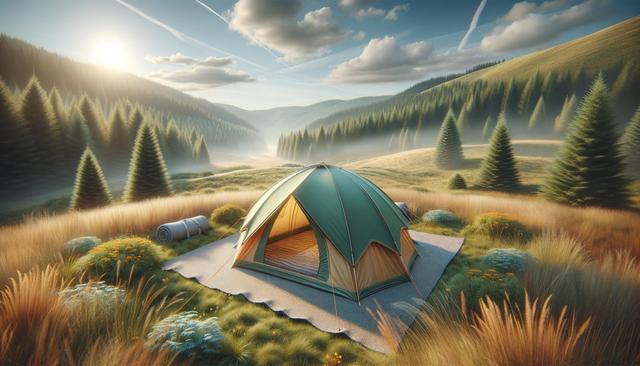Understanding Tent Types and Their Uses
Outdoor tents come in various forms, each tailored to specific environments and activities. For beginners, understanding these categories can simplify the selection process. Dome tents are among the most common due to their easy setup, stability, and versatility for general camping. Tunnel tents offer more space and are ideal for families or group camping trips, although they may require more time to pitch. Geodesic tents, known for their structural strength, are a go-to option for mountaineers facing harsh weather conditions. Backpacking tents, designed with weight considerations in mind, are compact and lightweight, making them suitable for long-distance hikes where every ounce counts. For ultralight enthusiasts, minimalist options like bivy sacks or tarp shelters provide essential coverage with minimal bulk, though they sacrifice interior space and comfort.
Key Features to Consider When Choosing a Tent
When selecting an outdoor tent, several features directly affect performance and comfort. The first aspect to examine is tent capacity. While tents are labeled by the number of people they can accommodate, it’s wise to consider one size up for added comfort and gear storage. Season rating is another important factor. Three-season tents are suitable for spring through fall, offering ventilation and rain protection, while four-season tents are built to endure snow and wind, often used in alpine conditions. Materials also play a critical role. Tent fabrics like ripstop nylon or polyester provide durability and weather resistance, and higher-denier fabrics typically offer more robustness. Poles made from aluminum are strong yet lightweight, whereas fiberglass poles are more affordable but less durable. Ventilation systems, such as mesh panels and adjustable vents, help manage condensation and maintain airflow, especially during summer use.
Setup and Portability Considerations
Ease of setup and portability are essential, particularly for solo adventurers or those moving camp frequently. Freestanding tents are popular due to their simple assembly and ability to be moved without dismantling. Non-freestanding tents require staking and tensioning, which can be more time-consuming but often result in lower weight. Color-coded poles and clips, as well as intuitive hub systems, enhance the assembly experience. The packed size and weight of a tent are critical for backpackers; compact tents that fit easily into a backpack without adding excessive weight can make a significant difference on long treks. It’s also worth noting that tents with integrated footprints or ground sheets can save time and provide extra protection for the tent floor.
Durability and Weather Resistance
A reliable tent must endure the elements and repeated use. Water resistance is typically measured with hydrostatic head ratings; a higher rating indicates better waterproofing. Sealed seams, bathtub floors, and rainflies with sufficient coverage contribute to a tent’s ability to fend off moisture. Wind resistance depends largely on tent shape and pole architecture. Geodesic and semi-geodesic designs offer excellent wind stability due to their interlocking pole structure. UV resistance is another often overlooked factor—tents exposed to direct sunlight for extended periods can degrade over time, especially those made from untreated fabrics. For long-term durability, reinforced stress points and quality zippers can prevent common failures. Proper care, such as storing tents dry and away from direct sunlight, extends their lifespan significantly.
Maintenance and Long-Term Care
Proper tent maintenance ensures continued functionality and safety over time. After each trip, it’s important to clean the tent by shaking out debris and wiping it down with a damp cloth. Avoid using harsh detergents that can damage waterproof coatings. Allow the tent to air dry completely before storing it to prevent mildew and odor buildup. Store tents loosely in a breathable bag rather than tightly packed in a compression sack, which can weaken fabrics and coatings. Periodically inspect for wear and tear, such as small holes or seam separation, and repair them with seam sealers or patch kits as needed. Reapplying durable water repellent (DWR) treatments to the rainfly and tent body can restore water resistance. Maintaining poles and zippers by checking for bends, corrosion, or snags helps prevent failure in the field. Responsible care not only extends the life of the tent but also ensures it performs when needed most.
Conclusion: Choosing the Right Tent for Your Adventure
Whether you’re new to outdoor camping or an experienced mountaineer, selecting the right tent is a critical investment in comfort, safety, and enjoyment. By understanding the different types of tents, evaluating key features, considering setup and portability, and committing to proper maintenance, you can make a well-informed decision that suits your specific needs. With outdoor gear technology constantly evolving, it’s easier than ever to find a tent that balances weight, durability, and functionality. Take the time to assess your typical environments, group size, and trip duration to ensure your shelter supports your adventure goals effectively.








